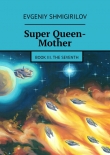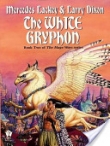
Текст книги "The British Study Edition of the Urantia Papers"
Автор книги: Tigran Aivazian
Жанр:
Религия
сообщить о нарушении
Текущая страница: 103 (всего у книги 295 страниц)
PAPER № 66
THE PLANETARY PRINCE OF URANTIA
Melchizedek
66:0.1 The advent of a Lanonandek Son on an average world signifies that will, the ability to choose the path of eternal survival, has developed in the mind of primitive man. But on Urantia the Planetary Prince arrived almost 500,000 years after the appearance of human will.
66:0.2 About 500,000 years ago and concurrent with the appearance of the six coloured or Sangik races, Caligastia, the Planetary Prince, arrived on Urantia. There were almost 5·108 primitive human beings on earth at the time of the Prince’s arrival, and they were well scattered over Europe, Asia, and Africa. The Prince’s headquarters, established in Mesopotamia, was at about the centre of world population.
1. PRINCE CALIGASTIA66:1.1 Caligastia was a Lanonandek Son, number 9,344 of the secondary order. He was experienced in the administration of the affairs of the local universe in general and, during later ages, with the management of the local system of Satania in particular.
66:1.2 Prior to the reign of Lucifer in Satania, Caligastia had been attached to the council of the Life Carrier advisers on Jerusem. Lucifer elevated Caligastia to a position on his personal staff, and he acceptably filled five successive assignments of honour and trust.
66:1.3 ¶ Caligastia very early sought a commission as Planetary Prince, but repeatedly, when his request came up for approval in the constellation councils, it would fail to receive the assent of the Constellation Fathers. Caligastia seemed especially desirous of being sent as planetary ruler to a decimal or life-modification world. His petition had several times been disapproved before he was finally assigned to Urantia.
66:1.4 Caligastia went forth from Jerusem to his trust of world dominion with an enviable record of loyalty and devotion to the welfare of the universe of his origin and sojourn, notwithstanding a certain characteristic restlessness coupled with a tendency to disagree with the established order in certain minor matters.
66:1.5 I was present on Jerusem when the brilliant Caligastia departed from the system capital. No prince of the planets ever embarked upon a career of world rulership with a richer preparatory experience or with better prospects than did Caligastia on that eventful day 500,000 years ago. One thing is certain: As I executed my assignment of putting the narrative of that event on the broadcasts of the local universe, I never for one moment entertained even in the slightest degree any idea that this noble Lanonandek would so shortly betray his sacred trust of planetary custody and so horribly stain the fair name of his exalted order of universe sonship. I really regarded Urantia as being among the five or six most fortunate planets in all Satania in that it was to have such an experienced, brilliant, and original mind at the helm of world affairs. I did not then comprehend that Caligastia was insidiously falling in love with himself; I did not then so fully understand the subtleties of personality pride.
2. THE PRINCE’S STAFF66:2.1 The Planetary Prince of Urantia was not sent out on his mission alone but was accompanied by the usual corps of assistants and administrative helpers.
66:2.2 At the head of this group was Daligastia, the associate-assistant of the Planetary Prince. Daligastia was also a secondary Lanonandek Son, being number 319,407 of that order. He ranked as an assistant at the time of his assignment as Caligastia’s associate.
66:2.3 The planetary staff included a large number of angelic co-operators and a host of other celestial beings assigned to advance the interests and promote the welfare of the human races. But from your standpoint the most interesting group of all were the corporeal members of the Prince’s staff – sometimes referred to as the Caligastia 100.
66:2.4 ¶ These 100 rematerialized members of the Prince’s staff were chosen by Caligastia from over 785,000 ascendant citizens of Jerusem who volunteered for embarkation on the Urantia adventure. Each one of the chosen 100 was from a different planet, and none of them were from Urantia.
66:2.5 These Jerusemite volunteers were brought by seraphic transport direct from the system capital to Urantia, and upon arrival they were held enseraphimed until they could be provided with personality forms of the dual nature of special planetary service, literal bodies consisting of flesh and blood but also attuned to the life circuits of the system.
66:2.6 ¶ Sometime before the arrival of these 100 Jerusem citizens, the two supervising Life Carriers resident on Urantia, having previously perfected their plans, petitioned Jerusem and Edentia for permission to transplant the life plasm of 100 selected survivors of the Andon and Fonta stock into the material bodies to be projected for the corporeal members of the Prince’s staff. The request was granted on Jerusem and approved on Edentia.
66:2.7 Accordingly, 50 males and 50 females of the Andon and Fonta posterity, representing the survival of the best strains of that unique race, were chosen by the Life Carriers. With one or two exceptions these Andonite contributors to the advancement of the race were strangers to one another. They were assembled from widely separated places by co-ordinated Thought Adjuster direction and seraphic guidance at the threshold of the planetary headquarters of the Prince. Here the 100 human subjects were given into the hands of the highly skilled volunteer commission from Avalon, who directed the material extraction of a portion of the life plasm of these Andon descendants. This living material was then transferred to the material bodies constructed for the use of the 100 Jerusemite members of the Prince’s staff. Meantime, these newly arrived citizens of the system capital were held in the sleep of seraphic transport.
66:2.8 ¶ These transactions, together with the literal creation of special bodies for the Caligastia 100, gave origin to numerous legends, many of which subsequently became confused with the later traditions concerning the planetary installation of Adam and Eve.
66:2.9 The entire transaction of repersonalization, from the time of the arrival of the seraphic transports bearing the 100 Jerusem volunteers until they became conscious, threefold beings of the realm, consumed exactly ten days.
3. DALAMATIA – THE CITY OF THE PRINCE66:3.1 The headquarters of the Planetary Prince was situated in the Persian Gulf region of those days, in the district corresponding to later Mesopotamia.
66:3.2 The climate and landscape in the Mesopotamia of those times were in every way favourable to the undertakings of the Prince’s staff and their assistants, very different from conditions which have sometimes since prevailed. It was necessary to have such a favouring climate as a part of the natural environment designed to induce primitive Urantians to make certain initial advances in culture and civilization. The one great task of those ages was to transform man from a hunter to a herder, with the hope that later on he would evolve into a peace-loving, home-abiding farmer.
66:3.3 ¶ The headquarters of the Planetary Prince on Urantia was typical of such stations on a young and developing sphere. The nucleus of the Prince’s settlement was a very simple but beautiful city, enclosed within a wall 12 m high. This world centre of culture was named Dalamatia in honour of Daligastia.
66:3.4 The city was laid out in ten subdivisions with the headquarters mansions of the ten councils of the corporeal staff situated at the centres of these subdivisions. Centremost in the city was the temple of the unseen Father. The administrative headquarters of the Prince and his associates was arranged in 12 chambers immediately grouped about the temple itself.
66:3.5 The buildings of Dalamatia were all one story except the council headquarters, which were two stories, and the central temple of the Father of all, which was small but three stories in height.
66:3.6 The city represented the best practices of those early days in building material – brick. Very little stone or wood was used. Home building and village architecture among the surrounding peoples were greatly improved by the Dalamatian example.
66:3.7 ¶ Near the Prince’s headquarters there dwelt all colours and strata of human beings. And it was from these near-by tribes that the first students of the Prince’s schools were recruited. Although these early schools of Dalamatia were crude, they provided all that could be done for the men and women of that primitive age.
66:3.8 The Prince’s corporeal staff continuously gathered about them the superior individuals of the surrounding tribes and, after training and inspiring these students, sent them back as teachers and leaders of their respective peoples.
4. EARLY DAYS OF THE ONE HUNDRED66:4.1 The arrival of the Prince’s staff created a profound impression. While it required almost 1,000 years for the news to spread abroad, those tribes near the Mesopotamian headquarters were tremendously influenced by the teachings and conduct of the 100 new sojourners on Urantia. And much of your subsequent mythology grew out of the garbled legends of these early days when these members of the Prince’s staff were repersonalized on Urantia as supermen.
66:4.2 The serious obstacle to the good influence of such extraplanetary teachers is the tendency of mortals to regard them as gods, but aside from the technique of their appearance on earth the Caligastia 100 – 50 men and 50 women – did not resort to supernatural methods nor superhuman manipulations.
66:4.3 But the corporeal staff were nonetheless superhuman. They began their mission on Urantia as extraordinary threefold beings:
66:4.4 1. They were corporeal and relatively human, for they embodied the actual life plasm of one of the human races, the Andonic life plasm of Urantia.
66:4.5 These 100 members of the Prince’s staff were divided equally as to sex and in accordance with their previous mortal status. Each person of this group was capable of becoming coparental to some new order of physical being, but they had been carefully instructed to resort to parenthood only under certain conditions. It is customary for the corporeal staff of a Planetary Prince to procreate their successors sometime prior to retiring from special planetary service. Usually this is at, or shortly after, the time of the arrival of the Planetary Adam and Eve.
66:4.6 These special beings therefore had little or no idea as to what type of material creature would be produced by their sexual union. And they never did know; before the time for such a step in the prosecution of their world work the entire regime was upset by rebellion, and those who later functioned in the parental role had been isolated from the life currents of the system.
66:4.7 In skin colour and language these materialized members of Caligastia’s staff followed the Andonic race. They partook of food as did the mortals of the realm with this difference: The re-created bodies of this group were fully satisfied by a nonflesh diet. This was one of the considerations which determined their residence in a warm region abounding in fruits and nuts. The practice of subsisting on a nonflesh diet dates from the times of the Caligastia 100, for this custom spread near and far to affect the eating habits of many surrounding tribes, groups of origin in the once exclusively meat-eating evolutionary races.
66:4.8 2. The 100 were material but superhuman beings, having been reconstituted on Urantia as unique men and women of a high and special order.
66:4.9 This group, while enjoying provisional citizenship on Jerusem, were as yet unfused with their Thought Adjusters; and when they volunteered and were accepted for planetary service in liaison with the descending orders of sonship, their Adjusters were detached. But these Jerusemites were superhuman beings – they possessed souls of ascendant growth. During the mortal life in the flesh the soul is of embryonic estate; it is born (resurrected) in the morontia life and experiences growth through the successive morontia worlds. And the souls of the Caligastia 100 had thus expanded through the progressive experiences of the seven mansion worlds to citizenship status on Jerusem.
66:4.10 In conformity to their instructions the staff did not engage in sexual reproduction, but they did painstakingly study their personal constitutions, and they carefully explored every imaginable phase of intellectual (mind) and morontia (soul) liaison. And it was during the 33rd year of their sojourn in Dalamatia, long before the wall was completed, that number two and number seven of the Danite group accidentally discovered a phenomenon attendant upon the liaison of their morontia selves (supposedly nonsexual and nonmaterial); and the result of this adventure proved to be the first of the primary midway creatures. This new being was wholly visible to the planetary staff and to their celestial associates but was not visible to the men and women of the various human tribes. Upon authority of the Planetary Prince the entire corporeal staff undertook the production of similar beings, and all were successful, following the instructions of the pioneer Danite pair. Thus did the Prince’s staff eventually bring into being the original corps of 50,000 primary midwayers.
66:4.11 These mid-type creatures were of great service in carrying on the affairs of the world’s headquarters. They were invisible to human beings, but the primitive sojourners at Dalamatia were taught about these unseen semispirits, and for ages they constituted the sum total of the spirit world to these evolving mortals.
66:4.12 3. The Caligastia 100 were personally immortal, or undying. There circulated through their material forms the antidotal complements of the life currents of the system; and had they not lost contact with the life circuits through rebellion, they would have lived on indefinitely until the arrival of a subsequent Son of God, or until their sometime later release to resume the interrupted journey to Havona and Paradise.
66:4.13 These antidotal complements of the Satania life currents were derived from the fruit of the tree of life, a shrub of Edentia which was sent to Urantia by the Most Highs of Norlatiadek at the time of Caligastia’s arrival. In the days of Dalamatia this tree grew in the central courtyard of the temple of the unseen Father, and it was the fruit of the tree of life that enabled the material and otherwise mortal beings of the Prince’s staff to live on indefinitely as long as they had access to it.
66:4.14 While of no value to the evolutionary races, this supersustenance was quite sufficient to confer continuous life upon the Caligastia 100 and also upon the 100 modified Andonites who were associated with them.
66:4.15 ¶ It should be explained in this connection that, at the time the 100 Andonites contributed their human germ plasm to the members of the Prince’s staff, the Life Carriers introduced into their mortal bodies the complement of the system circuits; and thus were they enabled to live on concurrently with the staff, century after century, in defiance of physical death.
66:4.16 Eventually the 100 Andonites were made aware of their contribution to the new forms of their superiors, and these same 100 children of the Andon tribes were kept at headquarters as the personal attendants of the Prince’s corporeal staff.
5. ORGANIZATION OF THE ONE HUNDRED66:5.1 The 100 were organized for service in ten autonomous councils of ten members each. When two or more of these ten councils met in joint session, such liaison gatherings were presided over by Daligastia. These ten groups were constituted as follows:
66:5.2 1. The council on food and material welfare. This group was presided over by Ang. Food, water, clothes, and the material advancement of the human species were fostered by this able corps. They taught well digging, spring control, and irrigation. They taught those from the higher altitudes and from the north improved methods of treating skins for use as clothing, and weaving was later introduced by the teachers of art and science.
66:5.3 Great advances were made in methods of food storage. Food was preserved by cooking, drying, and smoking; it thus became the earliest property. Man was taught to provide for the hazards of famine, which periodically decimated the world.
66:5.4 2. The board of animal domestication and utilization. This council was dedicated to the task of selecting and breeding those animals best adapted to help human beings in bearing burdens and transporting themselves, to supply food, and later on to be of service in the cultivation of the soil. This able corps was directed by Bon.
66:5.5 Several types of useful animals, now extinct, were tamed, together with some that have continued as domesticated animals to the present day. Man had long lived with the dog, and the blue man had already been successful in taming the elephant. The cow was so improved by careful breeding as to become a valuable source of food; butter and cheese became common articles of human diet. Men were taught to use oxen for burden bearing, but the horse was not domesticated until a later date. The members of this corps first taught men to use the wheel for the facilitation of traction.
66:5.6 It was in these days that carrier pigeons were first used, being taken on long journeys for the purpose of sending messages or calls for help. Bon’s group were successful in training the great fandors as passenger birds, but they became extinct more than 30,000 years ago.
66:5.7 3. The advisers regarding the conquest of predatory animals. It was not enough that early man should try to domesticate certain animals, but he must also learn how to protect himself from destruction by the remainder of the hostile animal world. This group was captained by Dan.
66:5.8 The purpose of an ancient city wall was to protect against ferocious beasts as well as to prevent surprise attacks by hostile humans. Those living without the walls and in the forest were dependent on tree dwellings, stone huts, and the maintenance of night fires. It was therefore very natural that these teachers should devote much time to instructing their pupils in the improvement of human dwellings. By employing improved techniques and by the use of traps, great progress was made in animal subjugation.
66:5.9 4. The faculty on dissemination and conservation of knowledge. This group organized and directed the purely educational endeavours of those early ages. It was presided over by Fad. The educational methods of Fad consisted in supervision of employment accompanied by instruction in improved methods of labour. Fad formulated the first alphabet and introduced a writing system. This alphabet contained 25 characters. For writing material these early peoples utilized tree barks, clay tablets, stone slabs, a form of parchment made of hammered hides, and a crude form of paperlike material made from wasps’ nests. The Dalamatia library, destroyed soon after the Caligastia disaffection, comprised more than 2,000,000 separate records and was known as the “house of Fad.”
66:5.10 The blue man was partial to alphabet writing and made the greatest progress along such lines. The red man preferred pictorial writing, while the yellow races drifted into the use of symbols for words and ideas, much like those they now employ. But the alphabet and much more was subsequently lost to the world during the confusion attendant upon rebellion. The Caligastia defection destroyed the hope of the world for a universal language, at least for untold ages.
66:5.11 5. The commission on industry and trade. This council was employed in fostering industry within the tribes and in promoting trade between the various peace groups. Its leader was Nod. Every form of primitive manufacture was encouraged by this corps. They contributed directly to the elevation of standards of living by providing many new commodities to attract the fancy of primitive men. They greatly expanded the trade in the improved salt produced by the council on science and art.
66:5.12 It was among these enlightened groups educated in the Dalamatia schools that the first commercial credit was practised. From a central exchange of credits they secured tokens which were accepted in lieu of the actual objects of barter. The world did not improve upon these business methods for hundreds of thousands of years.
66:5.13 6. The college of revealed religion. This body was slow in functioning. Urantia civilization was literally forged out between the anvil of necessity and the hammers of fear. But this group had made considerable progress in their attempt to substitute Creator fear for creature fear (ghost worship) before their labours were interrupted by the later confusion attendant upon the secession upheaval. The head of this council was Hap.
66:5.14 None of the Prince’s staff would present revelation to complicate evolution; they presented revelation only as the climax of their exhaustion of the forces of evolution. But Hap did yield to the desire of the inhabitants of the city for the establishment of a form of religious service. His group provided the Dalamatians with the seven chants of worship and also gave them the daily praise-phrase and eventually taught them “the Father’s prayer,” which was:
66:5.15 ¶ “Father of all, whose Son we honour, look down upon us with favour. Deliver us from the fear of all save you. Make us a pleasure to our divine teachers and forever put truth on our lips. Deliver us from violence and anger; give us respect for our elders and that which belongs to our neighbours. Give us this season green pastures and fruitful flocks to gladden our hearts. We pray for the hastening of the coming of the promised uplifter, and we would do your will on this world as others do on worlds beyond.”
66:5.16 ¶ Although the Prince’s staff were limited to natural means and ordinary methods of race improvement, they held out the promise of the Adamic gift of a new race as the goal of subsequent evolutionary growth upon the attainment of the height of biologic development.
66:5.17 7. The guardians of health and life. This council was concerned with the introduction of sanitation and the promotion of primitive hygiene and was led by Lut.
66:5.18 Its members taught much that was lost during the confusion of subsequent ages, never to be rediscovered until the XX century. They taught mankind that cooking, boiling and roasting, was a means of avoiding sickness; also that such cooking greatly reduced infant mortality and facilitated early weaning.
66:5.19 Many of the early teachings of Lut’s guardians of health persisted among the tribes of earth on down to the days of Moses, even though they became much garbled and were greatly changed.
66:5.20 The great obstacle in the way of promoting hygiene among these ignorant peoples consisted in the fact that the real causes of many diseases were too small to be seen by the naked eye, and also because they all held fire in superstitious regard. It required thousands of years to persuade them to burn refuse. In the meantime they were urged to bury their decaying rubbish. The great sanitary advance of this epoch came from the dissemination of knowledge regarding the health-giving and disease-destroying properties of sunlight.
66:5.21 Before the Prince’s arrival, bathing had been an exclusively religious ceremonial. It was indeed difficult to persuade primitive men to wash their bodies as a health practice. Lut finally induced the religious teachers to include cleansing with water as a part of the purification ceremonies to be practised in connection with the noontime devotions, once a week, in the worship of the Father of all.
66:5.22 These guardians of health also sought to introduce handshaking in substitution for saliva exchange or blood drinking as a seal of personal friendship and as a token of group loyalty. But when out from under the compelling pressure of the teachings of their superior leaders, these primitive peoples were not slow in reverting to their former health-destroying and disease-breeding practices of ignorance and superstition.
66:5.23 8. The planetary council on art and science. This corps did much to improve the industrial technique of early man and to elevate his concepts of beauty. Their leader was Mek.
66:5.24 Art and science were at a low ebb throughout the world, but the rudiments of physics and chemistry were taught the Dalamatians. Pottery was advanced, decorative arts were all improved, and the ideals of human beauty were greatly enhanced. But music made little progress until after the arrival of the violet race.
66:5.25 These primitive men would not consent to experiment with steam power, notwithstanding the repeated urgings of their teachers; never could they overcome their great fear of the explosive power of confined steam. They were, however, finally persuaded to work with metals and fire, although a piece of red-hot metal was a terrorizing object to early man.
66:5.26 Mek did a great deal to advance the culture of the Andonites and to improve the art of the blue man. A blend of the blue man with the Andon stock produced an artistically gifted type, and many of them became master sculptors. They did not work in stone or marble, but their works of clay, hardened by baking, adorned the gardens of Dalamatia.
66:5.27 Great progress was made in the home arts, most of which were lost in the long and dark ages of rebellion, never to be rediscovered until modern times.
66:5.28 9. The governors of advanced tribal relations. This was the group intrusted with the work of bringing human society up to the level of statehood. Their chief was Tut.
66:5.29 These leaders contributed much to bringing about intertribal marriages. They fostered courtship and marriage after due deliberation and full opportunity to become acquainted. The purely military war dances were refined and made to serve valuable social ends. Many competitive games were introduced, but these ancient folk were a serious people; little humour graced these early tribes. Few of these practices survived the subsequent disintegration of planetary insurrection.
66:5.30 Tut and his associates laboured to promote group associations of a peaceful nature, to regulate and humanize warfare, to co-ordinate intertribal relations, and to improve tribal governments. In the vicinity of Dalamatia there developed a more advanced culture, and these improved social relations were very helpful in influencing more remote tribes. But the pattern of civilization prevailing at the Prince’s headquarters was quite different from the barbaric society evolving elsewhere, just as the XX century society of Capetown, South Africa, is totally unlike the crude culture of the diminutive Bushmen to the north.
66:5.31 10. The supreme court of tribal co-ordination and racial co-operation. This supreme council was directed by Van and was the court of appeals for all of the other nine special commissions charged with the supervision of human affairs. This council was one of wide function, being intrusted with all matters of earthly concern which were not specifically assigned to the other groups. This selected corps had been approved by the Constellation Fathers of Edentia before they were authorized to assume the functions of the supreme court of Urantia.








